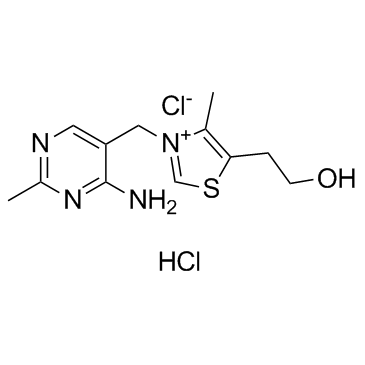| Structure | Name/CAS No. | Articles |
|---|---|---|
 |
Ammonium acetate
CAS:631-61-8 |
|
 |
Acetonitrile
CAS:75-05-8 |
|
 |
Caffeine
CAS:58-08-2 |
|
 |
Thiamine hydrochloride
CAS:67-03-8 |
|
 |
Quinacrine (dihydrochloride)
CAS:69-05-6 |